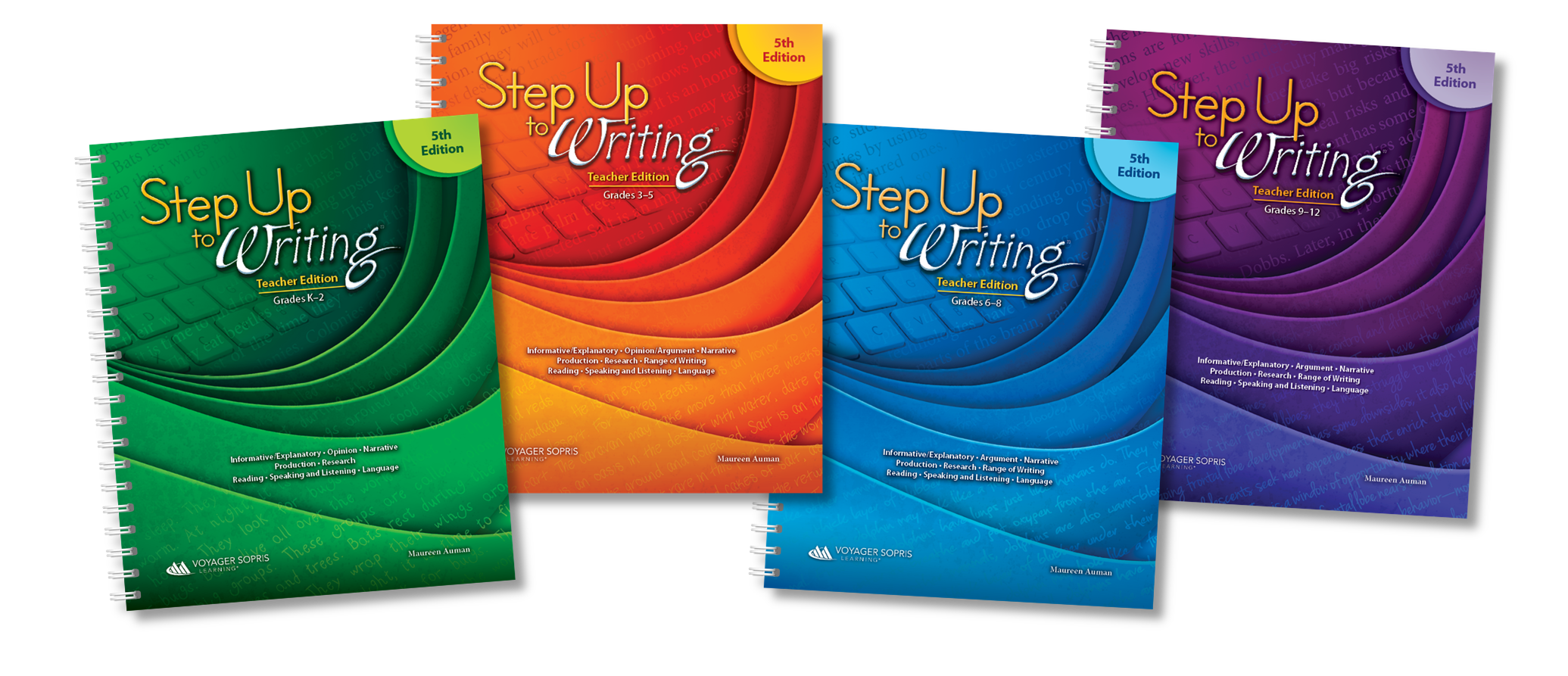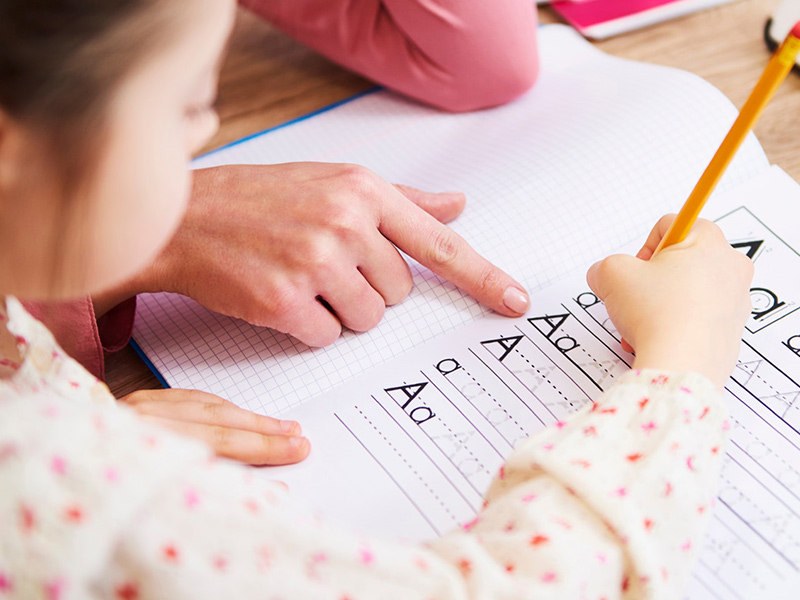Writing Instruction That Adapts to Every Student’s Needs
Step Up to Writing® is a comprehensive program of multisensory writing strategies that develop students’ ability to create thoughtful, well-written compositions. The solution’s explicit and systematic approach to teaching writing is designed to provide clear strategies, methods, and supports for increased writing success in all content areas. Created for all students, the strategies can be integrated into any curriculum or implemented as a standalone writing solution.
NEW! Fifth Edition

Fully revised Teacher's Guide and Assessment and Implementation Manual to better guide pacing, align to the latest standards, and provide additional differentiation for students.
New! Accompanying Student Handy Pages are now fully interactive guides for students that allow them to use Handy Pages as a reference in addition to a tool to help build their writing portfolio. Teachers can use them alongside work in the classroom or as a homework tool.
New! Completely redesigned, intuitive online educator interface. Now teachers can access thousands of resources in Step Up to Writing through an easy-to-use, searchable online platform. The new interface makes it easy for administrators to manage their implementation and saves teachers valuable time finding the tools and resources they need to deliver Step Up to Writing.

Propel Students Forward with Explicit Instruction
Step Up to Writing instructional strategies help students understand the importance of each step in the writing process. Beginning writers explicitly learn and practice each phase of the process. Common expectations and language for writing across every grade level builds confidence as students grow into more advanced writers and the process becomes fluid and automatic. This writing program provides:
- Multimodal instruction/differentiation
- Fills gaps in literacy learning and ensures strong foundational skills
- Flexible implementation options
- Support for writing instruction across all content areas
- A full body of proven writing strategies
- Multimodal instruction/differentiation
- Fills gaps in literacy learning and ensures strong foundational skills
- Flexible implementation options
- Support for writing instruction across all content areas
- A full body of proven writing strategies
The Power of Step Up to Writing
Four grade bands (K–2, 3–5, 6–8, and 9–12) targeting writing strategies to age levels as well as subject-area learning in specific grades.
Grade-level specific Unit Maps provide a sequence of instructional strategies as they help students improve writing skills.
Focus on the specific text types emphasized in state standards: informative/explanatory, opinion/argument, and narrative writing.
Realistic strategies for differentiation to ensure instruction will meet individual student needs.
Emphasis on using technology for research and to produce and publish work.
Explicit focus on supporting students in producing organized, clear, and coherent writing.
Support the Individuality of Each and Every Learner
One size fits all never works. With this in mind, Step Up to Writing provides variation and differentiation based on each student’s needs throughout hundreds of strategies, across all four grade bands. Optional “Craft and Style” callouts within the strategies teach the three major text types while also providing opportunities for additional depth and richness.

Step Up to Writing provides the specialized instruction to meet the needs of diverse student groups.
General Education
- Strategies boost student writing to the next level
- Solid structure across the types of writing assignments
- Revision guidance
- Consistent strategies and multiple opportunities for practice
Gifted & Talented
- Focus on organizing information strategically to increase written impact
- Writers learn to effectively articulate complex thoughts and content
- Students perceive shades of meaning within words
English Language Learners
- Oral language development is encouraged
- Students develop an academic vocabulary
- Students stay actively involved
- Emphasis on relating and organizing information
At Risk & Special Education
- Strategies make abstract concepts concrete
- Guidance for better reading comprehension
- Use of multisensory approaches
- Confidence is built incrementally
- Organization and planning skills are emphasized
Step Up to Writing Customer Success
We are committed to a long-term partnership with every district that implements our solutions. Districts can choose from a menu of training and support options including in-person or online. Visit our Customer Success page to learn more.

Featured Step Up to Writing Resources

Although reading and writing instruction are usually taught separately, they are both informed by the science of reading and reinforce each other throughout literacy development. Just as teaching students how to read requires explicit and systematic instruction, the same is true of writing instruction. In fact, writing is one of the most effective ways to improve reading proficiency.

While assistive technology can help students with writing problems, it does not remove the importance of teaching explicit handwriting. Handwriting reinforces reading and spelling skills, and is linked to reading and spelling achievement. In this insightful podcast, you will learn how handwriting supports the science of reading and strategies educators can use immediately in the classroom to build handwriting into their daily lessons.

Handwriting is back in the curriculum after a long absence. Educators now understand teaching handwriting explicitly is firmly linked to reading and spelling achievement. Although it never disappeared totally, it was de-emphasized in most districts. But it’s now clear handwriting plays a critical role in literacy and is making a comeback.
Award Winning Step Up to Writing


